2025 Inherited IRA Rules: What You Need to Know

Estimated reading time: 8 minutes
Inheriting a retirement account is not just a financial matter; it’s a personal decision that often comes during a challenging time.
When you inherit an IRA or other qualified retirement account, there are several options available to you, depending on the type of account and your relationship to the deceased. Each choice comes with its own financial implications, such as taxes, required minimum distributions (RMDs), and the potential for continued growth in the account.
This can be a complex process, but you don’t have to navigate it alone.
In this article, we’ll help you understand your options and give you the information you need to make an informed decision with your inherited IRA.
Note: This content is intended for general informational purposes only and does not constitute financial, legal, or tax advice. Consult with a qualified financial advisor, tax professional, or estate planner to discuss your specific situation and receive personalized guidance.
Table of Contents
- Summary of Recent Inherited IRA Rule Changes
- Types of Beneficiaries
- Eligible Designated Beneficiaries
- Designated Beneficiary
- Estate Beneficiaries
- Stay Informed on the New Inherited IRA Distribution Rules
Summary of Recent Inherited IRA Rule Changes
Recently, navigating the inherited IRA rules became much more complex. This is due to significant legislative changes introduced by the SECURE Act of 2019 and SECURE Act 2.0 of 2022. Here’s a clear overview of the key changes and their implications:
1. Elimination of the Stretch IRA
Before the 2019 SECURE Act, beneficiaries could stretch distributions over their lifetime, allowing for continued tax-deferred growth. Now, most beneficiaries must adhere to the 10-year rule, limiting long-term tax-deferred growth opportunities.
2. RMD Age Increases
The 2019 SECURE Act raised the RMD age from 70½ to 72. The 2022 SECURE Act 2.0 raised the RMD age once more to 73. This is planned to increase even further to 75 starting in 2033, providing beneficiaries with additional years before mandatory distributions begin.
3. Annual RMDs for Some Beneficiaries
Starting in 2025, many beneficiaries subject to the 10-year rule will also face annual RMDs. RMD amounts may vary based on factors like the beneficiary’s age, relationship to the deceased, and account value. Beneficiaries must ensure timely withdrawals to avoid penalties.
4. Waiver for Failure to Take RMD From Inherited IRA
On April 16, the IRS issued Notice 2024-35, announcing that the usual 25% excise tax for failing to take RMDs from inherited IRAs will be waived again for 2024. However, while the excise tax is waived, the RMD requirement itself is not.
For example, if someone inherited an IRA in 2020 and missed their RMDs for four years, they will need to take five years’ worth of RMDs in 2025 to avoid the excise tax. That is, unless the IRS extends the waiver beyond 2024.
Types of Beneficiaries
When inheriting an IRA or other retirement accounts, understanding your beneficiary status is crucial for making informed decisions. There are three distinct types of beneficiaries, each with specific implications for how you receive and manage inherited assets.
Eligible Designated Beneficiaries
You fall into this category if you are a:
- Spouse: The surviving spouse has additional options, such as treating the IRA as their own
- Minor Child: Until you reach the age of majority, at which point you must follow the 10-year rule; the 10 years begin counting down in the year after you reach the age of majority
- Individual Less Than 10 Years Younger: Such as siblings or cousins
- Chronically Ill or Disabled Individual: Meeting IRS criteria for disability or chronic illness
Eligible designated beneficiaries can take distributions based on their life expectancy, allowing for continued tax-deferred growth. These beneficiaries generally have more options for managing withdrawals compared to non-eligible beneficiaries.
Designated Beneficiaries
You are a designated beneficiary if you were named on the account but do not qualify as an eligible designated beneficiary.
The most common designated beneficiaries are:
- Non-Spouse Individuals: Such as friends or distant relatives.
- Entities: If you are an individual named as a beneficiary through a trust or estate but do not qualify under the eligible categories.
Most designated beneficiaries must deplete the inherited IRA within ten years of the year following the account holder’s death. There is some flexibility in how and when to withdraw funds within the ten-year period, but the entire balance must be withdrawn by the end of the tenth year.
For example, if your uncle died on June 30, 2025 and you were named as a designated beneficiary, you would have until December 31, 2036 to fully deplete the inherited IRA.
Trust/Estate as Named Beneficiary
You fall into this category if you are not directly named as the beneficiary but are beneficiaries through a trust or the deceased’s estate.
You must work with the estate’s executor or the trust’s trustee to manage and distribute the inherited assets. In addition, you must adhere to the specific instructions and guidelines outlined in the trust or will.
It may be necessary to involve legal and financial advisors to navigate the distribution process effectively. Trusts can provide structured distribution plans, but they require careful management to ensure compliance with legal requirements.
Eligible Designated Beneficiary Options
As an eligible designated beneficiary, you may have up to four options to manage the inherited IRA:
1. Treat the Inherited IRA as Your Own (Spouses Only)
If you’ve inherited an IRA from your spouse, you have a unique option that others don’t: you can combine the inherited IRA assets with your own IRA. This allows the funds to continue growing, which could give you a larger nest egg in retirement.
By adding the inherited assets to your own IRA, you can preserve potential tax benefits. For a traditional IRA, this means tax-deferred growth, and for a Roth IRA, it means tax-free growth. You may be able to make additional contributions to your own IRA, helping you build even more savings for retirement.
When you assume the assets, you’ll begin taking RMDs based on your age. This is either at age 73 (as of 2023) or age 75 (starting in 2033). RMDs from your own IRA tend to be smaller compared to those required from an inherited IRA because of the different calculation methods.
For Instance
David dies at age 68, leaving $800,000 in his traditional IRA to his 60 year-old wife, Tina. Since she is his spouse, she has the option to treat the inherited IRA as her own. She combines the $800,000 from John’s IRA into her own traditional IRA. By doing this, the funds continue to grow tax-deferred, and she can make additional contributions to the account, as allowed by the IRS.
Once Sarah reaches the RMD age, she must begin taking distributions from her account, using her own life expectancy to calculate the necessary amount. She preserves tax-deferred growth, has the ability to contribute more, and defers taxes on distributions until she reaches the appropriate age for RMDs.
2. Open an Inherited IRA and Take Distributions Over Time
With this option, you can access your funds at any time, and taxable distributions will be included in your gross income. RMDs will be based on your life expectancy according to the IRS life expectancy tables for beneficiaries. Even if you are under age 59½, distributions will be exempt from the regular 10% early withdrawal penalty.
- If the original account holder was under RMD age at the time of death: You must begin taking RMDs by December 31 of the year following their death. If you are the spouse of the deceased, you have until December 31 of the year in which the deceased would have reached RMD age to take your first RMD.
- If the original account holder was at RMD age at the time of death: You must begin taking RMDs by December 31 of the year following their death. If the account holder did not take an RMD for the year of their death, you must withdraw at least that amount by the end of the current year.
- If the beneficiary is a minor child of the deceased: Once the child turns 21, they must begin following the 10-year rule for withdrawals. This means they will have up to 10 years to fully withdraw the remaining IRA balance, starting from the year after they turn 21.
For Instance
Susan dies at age 85, leaving a Roth IRA holding $400,000 to her 50 year-old son, Mark.
Since Roth IRAs are tax-free, Mark chooses to take distributions over 10 years while allowing the rest of the balance to grow tax-free. Mark does not have to take RMDs during this 10-year period, but he must withdraw all the funds by the end of the 10th year.
Since it is a Roth IRA and the original account holder was over 59½, Mark’s withdrawals will be tax-free, and there are no early withdrawal penalties, even though he is under 59½. Mark can decide how to space out the remaining funds as needed – if he doesn’t need the funds for a while, he could allow them to sit in the account for nearly 10 years and benefit from tax-free compound interest.
3. Take a Lump-Sum Distribution
You have the option to withdraw the entire balance of the inherited IRA in a single lump sum. This method provides immediate access to all the funds but comes with significant tax implications.
The entire distribution is subject to ordinary income tax in the year you receive it. Receiving a large distribution in one year can push you into a higher tax bracket, resulting in substantial tax payments. By withdrawing the funds all at once, you forfeit the opportunity for the remaining balance to grow with the benefits of tax advantages.
For Instance
Maria dies at age 92, leaving $200,000 in a traditional IRA to her 52 year-old daughter, Sylvia. Sylvia has recently lost her job and bills have started to rack up, so she decides to take a lump-sum distribution from her mother’s traditional IRA. She withdraws the entire $200,000 in one year. Since it’s a traditional IRA, the full amount is added to Lisa’s taxable income for the year, leading to a hefty tax bill.
4. Disclaim the Account
Disclaiming an inherited IRA involves legally refusing to accept the inherited assets. By doing so, you effectively allow the IRA to pass to the next designated beneficiary according to the account holder’s beneficiary designation or the terms outlined in their will or trust.
Generally, the disclaimer must be made within nine months of the IRA owner’s death, although certain exceptions may apply. Keep in mind that once you legally disclaim an inherited IRA, you cannot reverse the decision.
For Instance
Carol dies at age 78, leaving $1,200,000 in a traditional IRA to her 55 year-old son, Mike. Mike does not want or need the inheritance and wishes for the funds to go to his brother, Tom, the contingent beneficiary. So, within nine months of Carol’s death, Mike chooses to disclaim the account. This allows the entire $1,200,000 to pass directly to Tom, who can then choose how to manage the inherited IRA from the two options above.
Designated Beneficiary
As a designated beneficiary, you have three options for managing the inherited IRA:
1. Open an Inherited IRA and Take Distributions Within 10 Years
For deaths occurring on or after January 1, 2020, the “stretch IRA” option (which allowed beneficiaries to take distributions over their lifetime) is no longer available.
If the original account owner had already started taking RMDs, you must continue taking annual RMDs during the 10-year distribution period, fully distributing the account by the 10th year. If the original account owner had not yet started RMDs, you can take distributions as you wish within the 10-year period.
No early withdrawal penalty applies, regardless of your age. However, if you don’t withdraw all the money by the end of the 10th year, you may face an excise penalty.
For Instance
Scott passed away in 2025 at age 68, leaving his $400,000 traditional IRA to his 55-year-old friend, Alex. Since Scott had not yet begun taking required minimum distributions (RMDs), Alex can delay withdrawing funds until the 10-year deadline approaches. This allows the account to grow tax-deferred, but when Alex withdraws the full amount, it will be added to his taxable income for that year, likely resulting in a significant tax bill.
Now, let’s consider if Scott had been 78 and already started taking RMDs at the time of his death. In this case, Alex must take Scott’s final RMD for the year of his death, calculated as if Scott were still alive. In this case, Scott’s life expectancy factor was 22.
Starting in 2026, Alex must take annual RMDs based on his own life expectancy. For example, if Alex is 56 in the year after Scott’s death, his life expectancy factor on the lifetime table for beneficiaries is 30.6. This factor decreases by 1 each year, increasing his annual RMD amount.
By the end of the 10th year, Alex must fully distribute the remaining balance in the IRA to avoid excise taxes.
2. Take a Lump-Sum Distribution
Choosing to withdraw the entire balance of the inherited IRA in one distribution provides immediate access to all the funds but comes with significant tax consequences.
As mentioned previously, the entire distribution is subject to ordinary income tax in the year received, potentially pushing you into a higher tax bracket. Further, withdrawn funds no longer grow tax-advantaged, potentially reducing long-term gains.
3. Disclaim the Account
Disclaiming an inherited IRA means formally refusing to accept the inheritance, allowing it to pass to the next eligible beneficiary. This option is irrevocable and must adhere to specific IRS guidelines.
Estate Beneficiaries
As an estate beneficiary, you have three primary options for handling an inherited IRA:
1. Open an Inherited IRA and Distribute Assets Within Five Years
If the deceased was under the RMD age at the time of death, then the executor must ensure the entire IRA balance is withdrawn by the end of the fifth year following the account holder’s death.
For Instance
John dies at age 65 with a traditional IRA worth $500,000. He has no designated beneficiaries or heirs. Since John passed away before reaching the RMD age, his estate must distribute the entire IRA balance within five years of his death.
The executor of the estate decides to distribute the funds evenly across the five years. This allows the estate to benefit from tax-advantaged growth while also remaining in a lower tax bracket, reducing the overall tax liability on the funds.
2. Open an Inherited IRA and Distribute Assets Based on the Deceased’s Life Expectancy
If the deceased was of RMD age at death, then the executor uses the deceased’s life expectancy to determine the distribution amounts each year.
For Instance
Margaret dies at age 75 with a traditional IRA balance of $600,000. Her IRA has no designated beneficiary, though her son Michael is named as the sole heir in her will. So, Michael is a non-designated beneficiary.
The executor of Margaret’s estate uses the IRS life expectancy tables to determine the annual distribution amounts for the estate. Margaret’s age of 75 gave her a life expectancy of an additional 14.8 years. So, the executor decides to distribute the $600,000 evenly over 14.8 years to Michael, allowing the funds to continue to benefit from tax-deferred growth.
3. Take a Lump-Sum Distribution
No matter your beneficiary status, you can always take a lump-sum distribution. While this option provides immediate liquidity, it comes with significant drawbacks.
Distributions are subject to ordinary income tax in the year they are received. Depending on the size of the inheritance, this could move the estate into a higher tax bracket. Plus, the estate misses out on the potential opportunity for any future tax-advantaged growth.
Stay Informed on the New Inherited IRA Distribution Rules
Inheriting a retirement plan introduces new financial responsibilities, which can feel overwhelming during a difficult time. However, it also presents an opportunity to plan for a more secure future.
Whether you choose to transfer your assets into an inherited IRA, move them into a new or existing retirement savings plan, or withdraw them as a lump-sum amount, Entrust is here to support you every step of the way.
To stay informed about all the new IRS rules, subscribe to our monthly newsletter. Each month, you’ll receive some of our top investor educational content right in your inbox, including an easy-to-understand breakdown of any new IRS rules or guidelines.
Have questions or need assistance about your inherited IRA? Reach out to our Client Services Department at 1-800-392-9653 or email ClientServices@TheEntrustGroup.com.
Finally, it’s never too early to start legacy planning for your IRA. Watch a replay of our IRA Legacy Planning webinar to learn how to navigate important beneficiary deadlines and protect your legacy by avoiding common pitfalls.











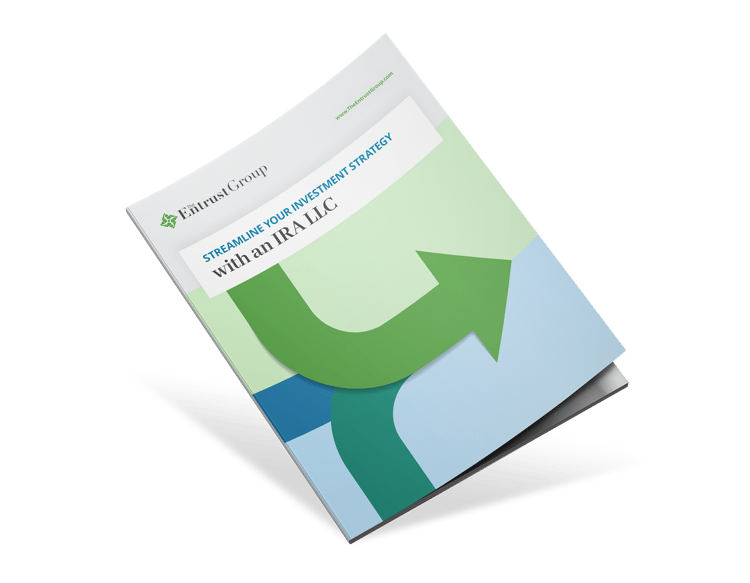

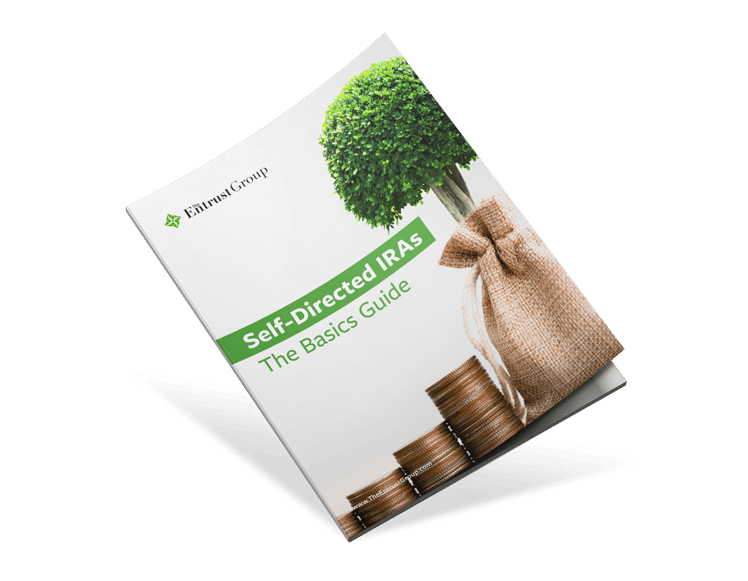







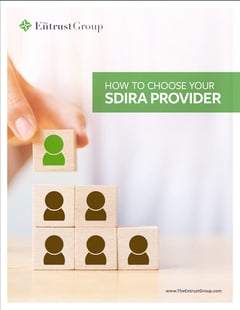
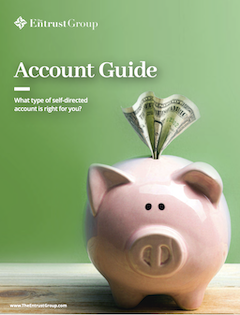
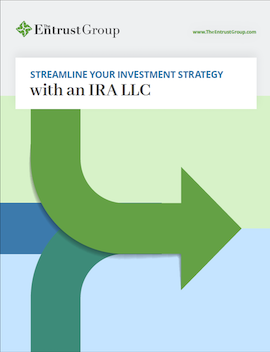

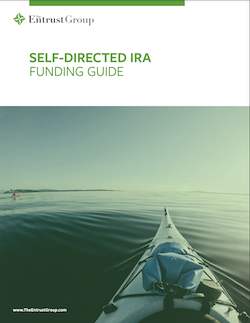
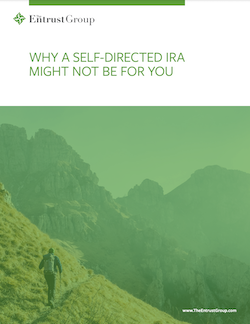
0 Comment